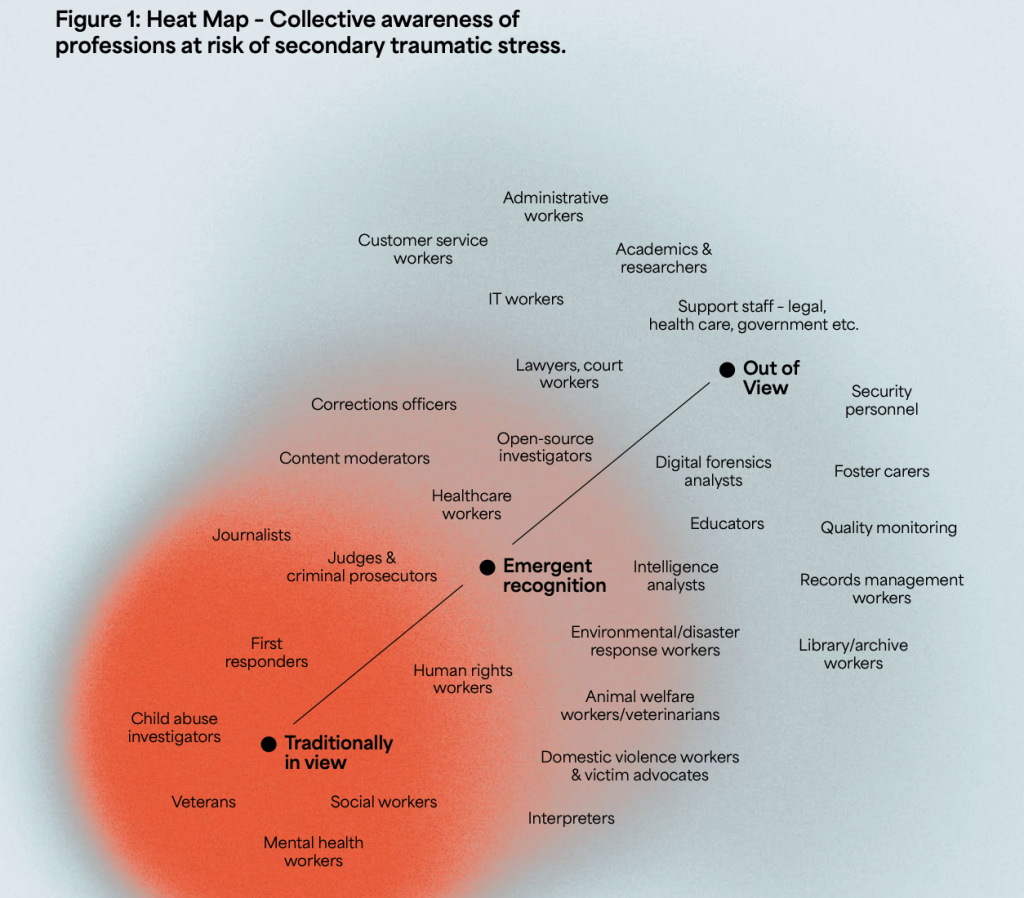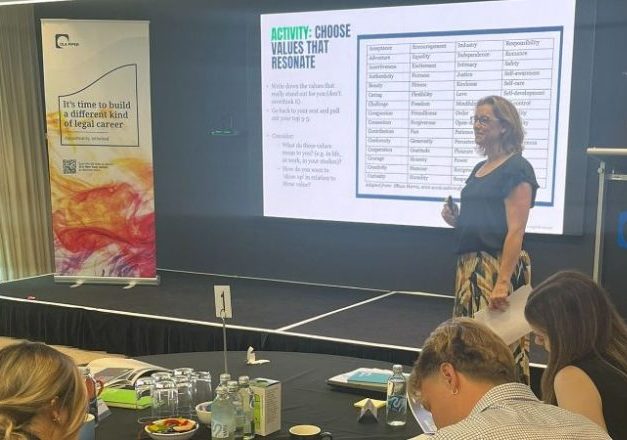Are your people experiencing hidden trauma at work?
When we think of workplace trauma, our minds immediately jump to first responders, social workers, and those on the frontline. But what about the customer service worker who just took a call from a victim of family and domestic violence? Or the IT worker tasked with reviewing flagged content containing child abuse material? These workers are experiencing vicarious trauma, and they’re largely invisible to their employers.
Recent research by Churchill Trust Fellow Amy Nicholas reveals trauma exposure in the workplace has evolved beyond traditional frontline roles. Her mapping of trauma-exposed professions shows that workers we’d never expect are now encountering traumatic content regularly, often without recognition, support, or the resources to cope.
Our now largely online world has changed who encounters trauma at work. Nicholas’s research identifies a “new digital frontline” where staff routinely encounter traumatic content from their desks. Admin workers process insurance claims involving fatal accidents. Customer service teams field calls from people in crisis. Academics research sensitive topics involving violence and abuse. IT workers analyse digital evidence containing disturbing material. These workers often face a greater volume and frequency of indirect trauma than their traditional counterparts, yet they remain largely “out of view” when it comes to workplace mental health support.

Image: Mitigating Vicarious Trauma: Adopting an occupational safety approach. Report: Churchill Trust.
Even more surprising are the roles with “emergent recognition,” where trauma exposure is only beginning to be understood. Content moderators for social media platforms view thousands of disturbing posts daily. Digital forensics analysts examine evidence from the darkest corners of the internet. Court workers process cases involving the worst of humanity. These workers share a common experience: their trauma exposure is unexpected, unrecognised, and unsupported.
The role of workplaces
Exposure to harmful content at work isn’t just a wellbeing concern, it’s a legal workplace safety issue. Safe Work Australia defines exposure to traumatic events or materials as a psychosocial hazard that can cause both psychological and physical harm. The definition includes listening to or seeing traumatic materials, reading victim testimonies, supporting trauma victims, and exposure to content that triggers traumatic memories. Employers have a legal duty to identify if psychosocial hazards, including traumatic events or materials, are present in their workplace and take steps to eliminate or minimise these risks. This means that organisations can no longer claim ignorance about trauma exposure in unexpected roles, they must actively assess and address these hazards.
Australian data shows psychological injury claims involving trauma exposure average $56,455 per claim, with workers losing a median of 28.4 weeks of work (Safe Work, 2024). Allianz reports that psychological workers’ compensation claims have increased 50 percent over five years, with average costs up 30 percent.
But the visible costs are just the beginning. A study from Safe Work Australia reveals that workers experiencing psychological distress take 43 percent more sick days and show 154 percent higher performance loss than their colleagues, equating to an average cost of $6,309 per worker annually. When compounded across an organisation, these hidden costs add up.
Organisational risks
- Compromised service delivery and work quality
- Eroded team culture
- Increased workplace conflict
- Higher staff turnover
- Increased recruitment and training costs
- Reputational damage
- Legal exposure and insurance premium increases
Unlike physical injuries that are reported immediately, psychological trauma often emerges after prolonged exposure, creating risks where multiple claims may surface simultaneously as awareness increases.
The problem is these workers are encountering trauma without the protective frameworks their frontline counterparts can access. For example, first responders have debriefing protocols, peer support programs, and cultural acceptance of their exposure. Hidden trauma workers often don’t even realise what they’re experiencing has a name.
HR leaders and their organisations may need to expand their understanding of who is at risk. That means looking beyond obvious roles to examine who else in the workplace might encounter:
- Detailed accounts of violence or abuse
- Graphic imagery or disturbing content
- Distressing audio or video material
- Intense emotional interactions with people in crisis
- Repetitive exposure to human suffering through documentation
Taking a proactive approach
Proven prevention strategies include role design that limits exposure, rotation systems, peer support programs, and clear protocols for managing disturbing content. Most importantly, organisations need to create cultures where workers feel safe discussing their exposure without fear of being seen as weak or unsuitable for their roles.
For employers, the choice is either invest in supporting these overlooked workers now, or pay far more in turnover, productivity losses, and workers’ compensation claims later.
Your admin staff, customer service team, and support workers deserve the same protection as any frontline responder. The question is: what will you do to support them?
Learn more about how Transitioning Well can help your organisation
Delivered by our workplace and trauma experts, our suite of trauma-informed practice training is designed to equip your team with the skills and techniques they need to create a safe and supportive workplace.
Read about our trauma-informed practice training work with Qantas



